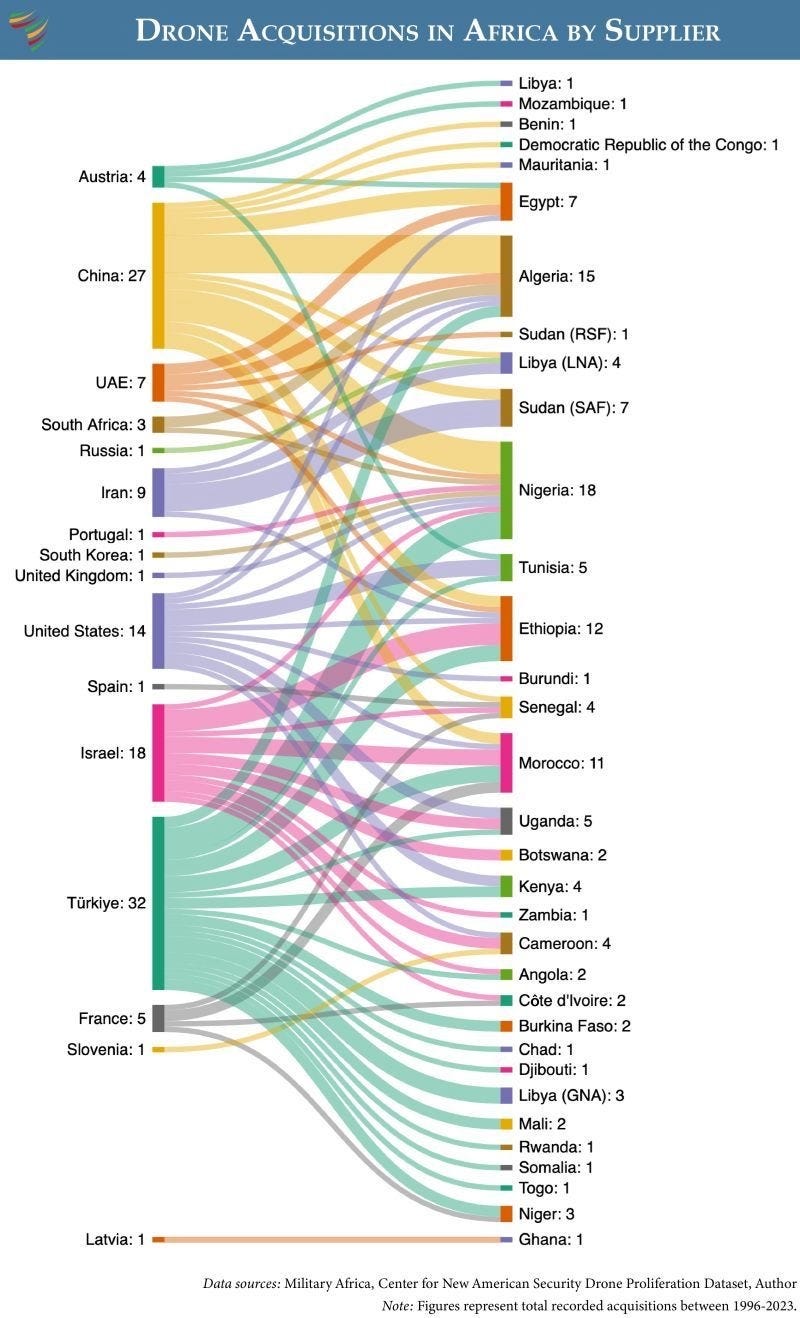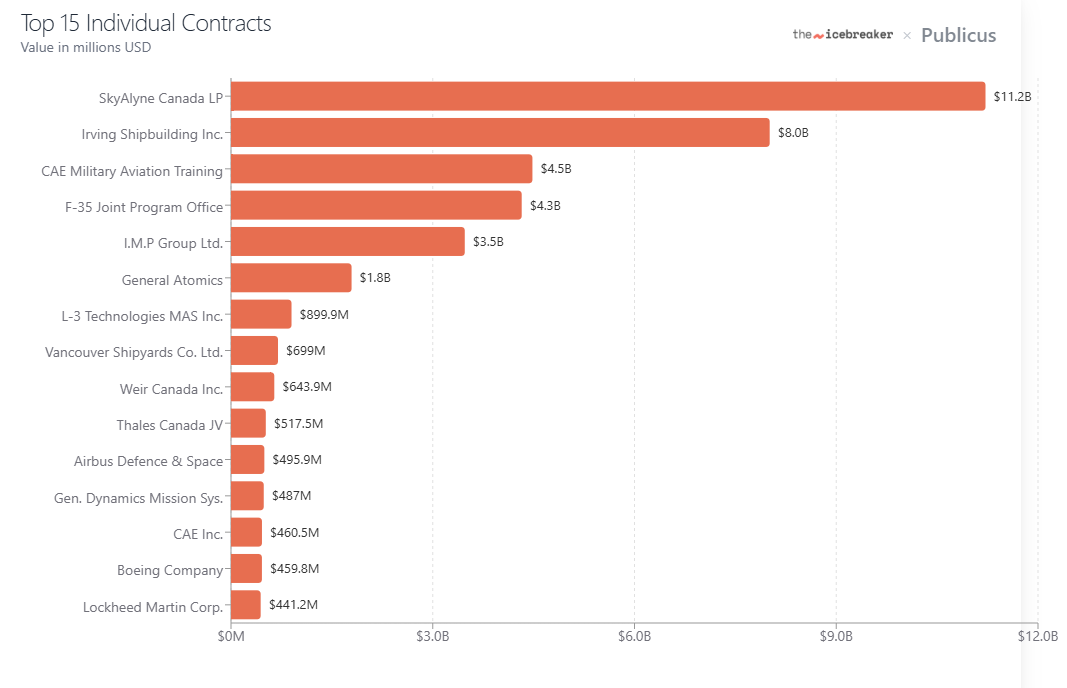Critical Systems, Combat Drones, and $121B
Nova Scotia Power attack shows utilities are prime targets for hostile state actors
🎯 Three-Shot Burst
Nova Scotia Cyberattack Exposes Glaring Gaps in Canada’s Defence Tech
Rajiv Gupta, head of the cyber security arm of Communications Security Establishment Canada, which specializes in foreign signals intelligence (SIGINT) and cyber security, is extremely concerned about a recent ransomware attack on Nova Scotia Power.
The attack shows that utilities, which underpin everything from civilian life to military operations, are prime targets for cybercriminals and potentially hostile state actors. Many of these systems were never designed for internet connectivity, yet are increasingly exposed as organizations chase efficiency and remote management.
Hack the grid: A Prague-based cyber security researcher is convinced that China is studying how to hack and crash Western power grids and other critical systems. Defence analysts speculate that foreign actors are more likely to lean on our infrastructure as a means of coercing action from us than they are to send kinetic force our way.
State of the union: Last year, the Canadian Centre for Cyber Security determined that ransomware is the top cybercrime threat facing Canada's critical infrastructure, pointing to the vulnerability of most assets.
Bottom line: Ransomware is now a national security threat. Extortion tactics like stealing data and locking systems are not just financial crimes; they can disrupt critical operations and erode public trust in national infrastructure. Moreover, they can also be about testing for security vulnerabilities under cover of chaos. Defence starts with protecting these assets by maintaining command and control at all times.
Related: Infrastructure + energy as security table stakes…
Canada’s cybersecurity agency said Chinese-backed hackers were likely behind recent malicious activity targeting domestic telecommunications infrastructure
Strider Technologies on how China recruited leading scientists from Los Alamos National Laboratory to advance its military programs
America's shale revolution gives it the freedom to confront Iran, but China's electrical grid may render oil supremacy obsolete
Canada won't become an energy superpower if the prime minister will only back projects that no one opposes:
🚀 Launch Window
Iran Builds Drones for the World—But Can’t Defend Its Own Airspace
Iran has a booming domestic drone industry, and Iranian drones have become a staple in modern conflict zones, with countries from Russia and Belarus to Venezuela and Bolivia purchasing Iranian-made UAVs.
Despite becoming a leading global arms exporter in UAV technology due to its drones’ low cost ($20,000–$40,000 per unit for the Shahed-136) and lack of export restrictions, Iran lost control of its own airspace in just days once the conflict with Israel began June 13. In part, this was due to Israel one-upping Iran with drone innovation: Mossad-activated UAVs struck deep into Iran from pre-positioned caches, neutralizing air defense systems before they could launch.
But Israel’s campaign inside Iran wasn’t won by drones alone. It was the seamless integration of covert drone sabotage with overwhelming manned airstrikes—hundreds of fighter jets and human pilots executing complex, high-risk missions deep in hostile territory.
Bottom Line: The rapid Israeli victory over Iran’s airspace shows that manned airpower, when fused with cutting-edge drone warfare and intelligence, is not obsolete. The future isn’t “drones or pilots.” It’s the ruthless combination of both, orchestrated for maximum shock and operational effect.
[N.B. These stats end at 2023. A lot has changed in drone development since then]
Related:
Israel’s air defence against Iran, explained: Israeli officials this week reported an interception success rate of more than 90 percent
Ceasefire?: Iran says it will stop attacks if Israel does, after Trump says ceasefire agreed
Friend of the Newsletter John Stackhouse on a podcast talking about the Low Earth Orbit Movement: From Arctic sovereignty to wildfire response, Canada’s challenges are increasingly being solved by the low earth orbital satellites less than 1000km from the earth’s surface
📋 Procurement Updates
Exclusive analysis on Canadian defence contracts
Friend of the Newsletter Joe Noss, co-founder of Publicus AI, a Toronto-based startup that is making it easier for firms to procure from governments across Canada, has produced a comprehensive analysis of Canadian defence contracts for The Icebreaker.
Publicus’ analysis examined $121B in federal defence contracts from 2019–2025, covering 110 557 individual contracts across 188 economic object categories and 30 127 unique vendors.
Key takeaways:
Peak Spending Year: 2024 ($29.3 B – 24.2 % of total)
Vendor Concentration: Top 1 % of vendors control 88.5 % of contract value
Long Tail Problem: 62.1 % of vendors have only one contract
Micro-Contract Issue: 50.7 % of contracts are under $25 K
Between April and June 15 of this year, the third largest contract awarded by the Government of Canada was $13.9 M USD for training services to the US Department of the Air Force
Bottom Line: The presence of a US Air Force contract in the top three, government-wide, while Canada openly debates American supplier bans, demonstrates the complexity of current procurement and defence politics.
🏰 Euro Trip
Diversifying procurement, alliances, and supply chains
Signed, sealed, delivered: PM Carney is in Brussels for security and defence talks with EU, NATO, where Canada has formally signed a new security pact.
The pact is explicitly designed to move Canada closer to participation in the EU’s €150 billion ($173 billion) joint procurement pool, known as Security Action for Europe (SAFE), which is part of the larger €800 billion ReArm Europe initiative.
Why it matters: The EU pivot is explicitly designed to diversify Canada’s defence industrial base and reduce overreliance on the U.S., where up to 70% of Canadian defence spending currently goes. It’s a strategic pivot away from “branch-plant” status in U.S. supply chains. Canadian defence firms have long been hamstrung by U.S. International Traffic in Arms Regulations (ITAR) and Buy American restrictions, which complicate tech transfer and limit market access.
Devil in the details: Canadian defence firms will be allowed to bid on ReArm Europe contracts, and the agreement lays the groundwork for future joint weapons purchases under SAFE. However, full access is not automatic. Canada must still negotiate a second agreement with the European Commission, and actual participation in SAFE will be on a purchase-by-purchase basis, led by European partners.
Bottom line: The agreement opens the door for Canadian SMEs to participate in European defence value chains, especially as the EU seeks to reduce its own dependency on U.S. suppliers. Canada has taken a significant step towards a future where Canadian IP, manufacturing, and innovation can anchor sovereign capability and drive exports. The EU’s new procurement program, potentially worth hundreds of billions, offers Canadian firms a rare chance to integrate at the ground floor, not just as sub-suppliers but as partners and co-developers.
⚔️ Combat Readiness
World’s first artillery-fired drones by China strike targets 6 miles away in seconds
China claims to have achieved a significant breakthrough in drone warfare technology, successfully testing drones that can be fired from 155mm artillery shells. Chinese military researchers first introduced the idea of firing drones from cannons in 2013.
After more than a decade of technical challenges and expert skepticism, Chinese military scientists have confirmed that their artillery-launched drones can survive the extreme forces of shell launch and function as intended.
According to a recent South China Morning Post report, the tests were conducted at a military base in western China.
Bottom Line: With the successful demonstration of artillery-launched drones, China has entered a new phase in combining traditional artillery systems with modern unmanned technology, creating fast, disposable, and precision-guided battlefield assets without relying on vulnerable launch platforms.
Related:
Western democracies are actually pretty good at war: The authoritarian advantage is hype. But China is the real deal:
🍁 Canada’s Inaugural Defence Power 50 List
The Icebreaker is excited to announce the opening of nominations for Canada’s inaugural Defence Power 50 List. The list will recognize the most influential leaders and up-and-comers in the defence community who are critical to making the changes Canada needs.
The selection of this inaugural 2025 list is co-chaired by Erin O'Toole, Glenn Cowan, Philippe Lagassé, Sheldon McCormick, and Eliot Pence.
Bottom Line: Nominate someone we should know about today!
😬 Meme Warfare
(H/T to C.R.)
🔫 Hot Shots
How Big Tech learned to love America's military: Silicon Valley companies are abandoning safety policies to win Pentagon contracts, turning everyday AI into weapons systems. Palantir and AI are inside the house.
Defence metals: Greenland gives permit to Toronto-based company to mine critical defence metal. The project can supply all EU demand for defence purposes for several decades
Parade rest!: More Canadians want to join the military, but current members keep leaving. Meanwhile, Ottawa is considering 'combination of approaches' to 20% military pay hike
Moving target: Just as Canada has finally committed to NATO’s 2% target, the UK will commit to spending 5% of GDP on defence by 2035. For context — if Canada were to spend 5% of our GDP on defence, the annual defence budget would need to be approximately $156.75 billion CAD—an increase of about $94 billion CAD per year over the current 2% commitment
Pivot, pivot: The CDA Institute with an analysis on why Canada’s security dilemma is fundamentally different from Europe’s
Europe’s defence awakening needs a second engine: Rob Murray, former head of innovation at NATO and the CEO of the Defence, Security, and Resilience (DSR) Bank Development Group, makes the case in Politico. [Eds note: The Icebreaker is pleased to be hosting Rob’s colleague, Canadian Kevin Reed, later this morning in Toronto on this very topic!]
With leaders this smart, who needs enemies?: RAF Brize Norton chief’s views on patriotism revealed after base is vandalized by protestors
Spaceman, oh spaceman: Congratulations to our pals at CSMC, who have been selected for the debut issue of BetaKit's Most Ambitious companies in Canada under the Moonshots category; Rahul Goel wants to give Canada its Apollo moment
Last chance: COVE’s 2026 NATO DIANA Challenge Briefing is happening today
📈 Public Market Proxy
Israeli stock market hits all-time high
🤝 See you this week?!
The Icebreaker is co-hosting two events during Toronto Tech Week [note that both are oversubscribed and now waitlist-only]
Arctic Edge: Canadian Defence Innovation and Investment, later this morning.
Defence Tech Patio Drop In, Friday: Sign up here to join VCs, founders, operators, defence primes, and the defence-curious, over a few cold beers on a sunny patio.
If you’ve got battlefield intel, classified tips, or just want to call in an airstrike on our typos, hit “reply” and sound off. Whether it’s a new tech sighting, a rumour from the mess hall, or feedback on our comms, we want your SITREP.








